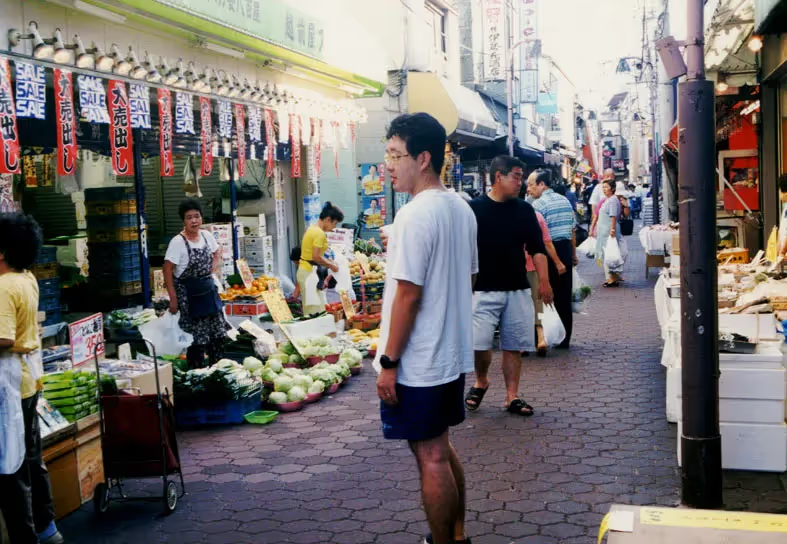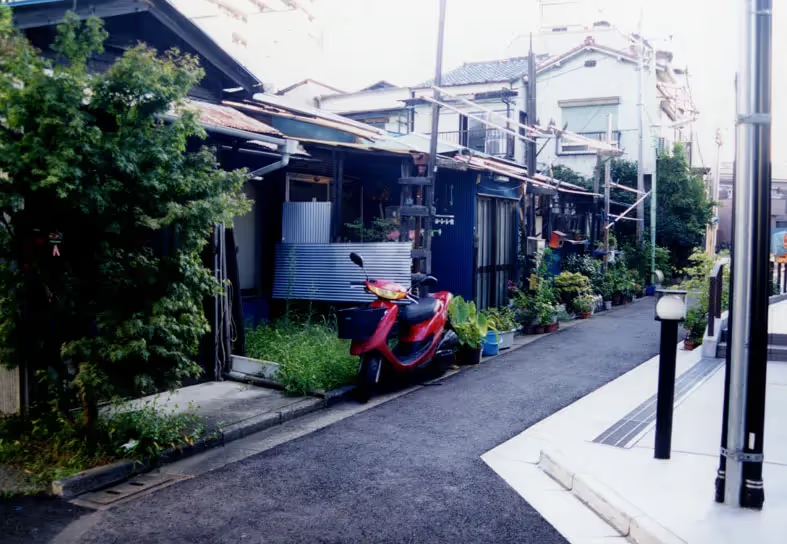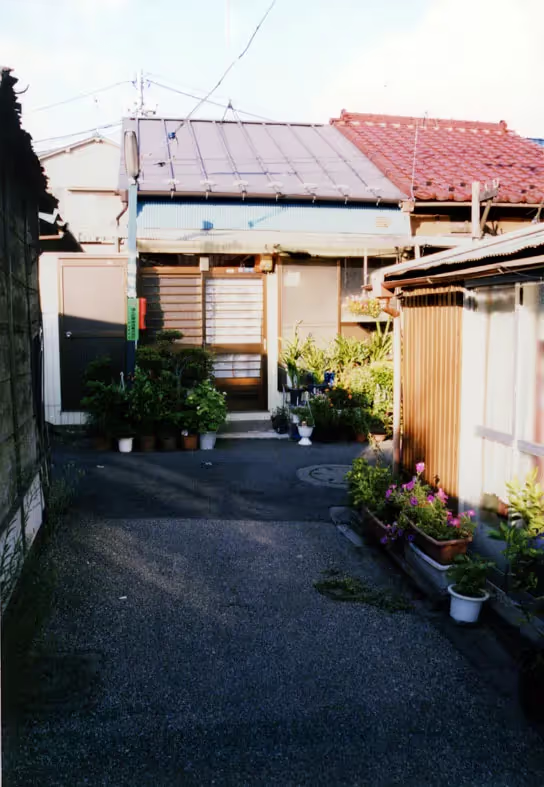A biweekly newsletter with public space news, resources, and opportunities.
A curated dispatch on all things public markets plus the latest announcements from the Market Cities Program.
Please note that these Hall of Shame nominations were written in a moment in time (most over a decade ago) and likely have since changed or even been transformed. If the above entry is now great, or still not so great, go ahead and comment below on how it has evolved or nominate it as a great place.

Traditional neighborhood with a lively community and a walkable environment

Kyojima is one of the traditional Japanese living environments remaining in Tokyo. Its old wooden tenement houses, narrow alleys, and its lively "Tachiban Ginza" shopping street characterize it. Though the neighborhood seems, at first sight, gloomy and messy, it is a place with a very intense community life. In a very human scale environment, children play in alleys embellished with lots of flowerpots, the elderly chat at entrance-doors, and in the summer, everybody dressing "Yukata" gathers at outdoors to celebrate dancing the Obon festival. Community life has also developed physically into the form of pocket parks and other urban installations, which have been designed as result of disaster prevention programs.
This neighborhood of around 25 hectares, centrally situated, can be reached by train, or by car. Most of its inhabitants however, walk or use the bicycle as principal means of transportation. Because of its narrow streets that sometimes no more than two meters wide, the area is almost car-free. Wider streets inside the neighborhood are also pedestrian-oriented, there are no sidewalks, and the integration of in- and outdoor spaces through the transparent facade is strong. The shopping street, Tachibana Ginza, is the core of the neighborhood, while pocket parks and small temples function as local landmarks.
Because the alleys are usually used as intimate outdoor rooms, passerby would feel comfortable and safe. Most of the area remains walkable. In Kyojima, the function of the intermediate space between public and private is very important. For instance in Tachibana Ginza, about five meters wide, more than 100 shops open up to the street. Doorways are usually open, and at any time it is a lively environment.
To keep the area cleaned, residents organize in teams to stroll along alleys and public areas every weekend while collecting garbage. The human scale in the neighborhood is strengthened by three-to-five-meters-high buildings occupying most of the area and by narrow alleys. However, because of the main building material is wood, Kyojima is poorly fireproof. Due to this situation some streets have been widen out to 6 meters for allowing outside help in case of a disaster, and pocket parks with underground water containers have been built.
As a livable neighborhood, people used to do more diversified outdoor activities than in other areas in Tokyo. In its alleys casual encounters often happen, and is common to see children enjoying the place as if it were a big playground; aged people chatting about the weather and other daily matters; and housewives doing errands. Men, woman, youth or elderly frequent the shopping street considered as the neighborhood axis.
During the summer the eight-meters-wide street crossing the neighborhood becomes a stage for community festivals. Female adults, youth and children, perform traditional dances while men chat, enjoy the ambiance, and drink at outdoors.
As one of the few traditional areas that can be visited in Tokyo, residents are proud of their place, and show it off to visitors without hesitation if it is requested. Within the community, neighbors look after each other. If a neighbor is sick, some one will bring food and medicine.
Kyojima was in the surroundings of Tokyo in the Edo Era; even in the late 19th century, many paddy fields and marshes could be found in the area. At the beginning of the 20th century, two railways were constructed and several small factories were established. After the great earthquake of 1923 the urbanization in Kyojima was faster than ever. A lot of wooden tenement houses were built to accommodate the people who lost their house from the central town. There was no plan and the urban fabric followed the location of the irrigation brooks.
After the Allied bombing, central Tokyo was almost destroyed and a similar situation happened: Kyojima was one of the few undamaged areas, and people moved in. By 1950 the density had grown to 800 persons per hectare. In 1965, the central government declared Kyojima as part of the Disaster Prevention Program.
In 1971 the metropolitan government proposed an urban renewal scheme that suggested the construction of residential towers and open spaces. A research report released in 1974 emphasized the importance of promoting community-based initiatives for Kyojima. In 1981 the Community Development Conference was founded, and later on, in 1990 the Community Development Center. Since then the local government of Sumida City, the metropolitan government, neighborhood associations and planners have worked together deciding policies and projects for revitalizing this traditional neighborhood.






*Please note that these Hall of Shame nominations were written in a moment in time (most over a decade ago) and likely have since changed or even been transformed. If the above entry is now great, or still not so great, go ahead and comment below on how it has evolved or nominate it as a great place.